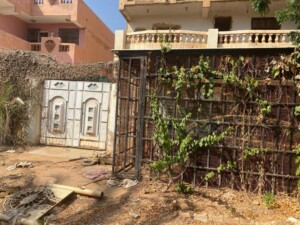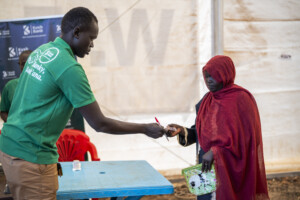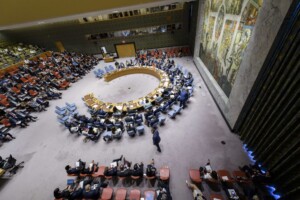Sudan OCHA bulletin 24: Sudan refugees visit from Chad, ‘diarrhoea’ cases decline
A number of Sudanese refugee leaders in camps in Chad visited Darfur to assess the situation for voluntary return for their communities. The Sudanese Ministry of Health reported a decline in the number of ‘acute diarrhoea’ cases nationwide. The food security improved slightly for all of Sudan, but harvests were poor in North Darfur, Kassala and northern Gedaref.
A number of Sudanese refugee leaders in camps in Chad visited Darfur to assess the situation for voluntary return for their communities. The Sudanese Ministry of Health reported a decline in the number of 'acute diarrhoea' cases nationwide. The food security improved slightly for all of Sudan, but harvests were poor in North Darfur, Kassala and northern Gedaref.
Refugee leaders from Chad visit Darfur
The UN Office for the Coordination of Humanitarian Affairs (OCHA) reports in its latest biweekly humanitarian bulletin that 25 Sudanese refugee leaders are visiting their home villages for the first time in a decade on go-and-see visits organised by UN Refugee Agency (UNHCR) and government counterparts in Chad and Sudan. The visits follow the signing of a tri-partite agreement in May 2017 between UNHCR and the Governments of Sudan and Chad outlining key considerations for return. There is an agreement by the three parties that return should be voluntary and that refugees have the right to return to their areas of origin in safety and with dignity.
For return to be sustainable, a secure environment with minimum basic services needs to be in place. Shelter, basic services, and security are among the key issues the refugee representatives have raised concerns about. UNHCR estimates that 30,000 refugees may have returned permanently on their own since 2015 from Chad to Darfur. However, some only come back temporarily for seasonal farming due to remaining tensions in some home areas.
In Chad, Sudanese refugees face dwindling humanitarian support, with cuts to food rations and limited livelihood opportunities and access to land, according to the refugees on the go-and-visit.
'Acute diarrhoea' cases decline
According to the latest report from the Sudanese Ministry of Health and the World Health Organization (WHO), acute watery diarrhoea cases remain low during the period from 29 October to 4 November, with only 50 new cases and one related death reported.
The rate of fatal cases has drastically declined from average 30 deaths per week to less than two in the last three to four weeks. Currently, only three out of the 18 affected states report active case transmissions.
In spite of numerous independent confirmations (conducted according to WHO standards) that the disease which broke out in Blue Nile state in August last year turned out to be cholera, the Government of Sudan and several international organisations still refuse to refer to it by this name.
Sudanese doctors of the National Epidemiological Corporation reported in early July that nearly 24,000 Sudanese had been infected and 940 cholera patients have died since the outbreak started in Blue Nile in August 2016. Last month the WHO and Sudan reported that the total number of reported 'diarrhoea' cases across 18 states of Sudan has reached over 35,000 people – this includes 800 deaths.
Food security improves slightly
The food security situation in most areas of Sudan is improving to Minimal (IPC Phase 1) and Stressed (IPC Phase 2) levels mainly due to the October harvest, seasonal improvement in livestock productivity and increased incomes from seasonal labour, according to the latest FEWS NET Sudan Food Security Outlook Report for October 2017. Overall, rains have performed very well over most parts of the country and national harvest prospects are near average.
However, very poor seasonal progress in pastoral and agro-pastoral areas of Kassala, northern Gedaref, and parts of North Darfur states are leading to Crisis (IPC Phase 3) levels of food security and people will need humanitarian assistance between now and mid-2018, the report states.
In the Jebel Marra area of Darfur and areas controlled by the Sudan People’s Liberation Movement – North (SPLM-N) access to food is improving among internally displaced persons (IDPs) and poor households, according to FEWS NET. However, restrictions on access to land, limited agricultural labour opportunities and continued low asset holdings, as a result of conflict, continue to limit household productive capacity. Households in these areas will continue to require humanitarian assistance through May 2018.
Human needs in Abyei
Limited or absent basic services coupled with the influx of people from South Sudan and returnees who had left at the onset of the Abyei crisis have resulted in continued significant humanitarian needs in the Abyei Area, according to the latest report of the Secretary General on the Situation in Abyei issued on 17 October 2017. Since August 2017, an estimated 7,500 people displaced by conflict in South Sudan have transited through the Abyei Area on their way to Sudan.
EU: 106 million euro to support Sudan
On 23 October, the European Commission announced in a press release a €106 million (about US$ 123 million) donation for humanitarian and development assistance to help people affected by displacement, malnutrition, disease outbreaks and recurrent extreme climatic conditions in Sudan. Of this amount, €46 million (about $54 million) will go towards humanitarian assistance and €60 million (about $70 million) towards development assistance. The funding will ensure the provision of lifesaving assistance to the needs of South Sudanese refugees, displaced and host communities.
This humanitarian support package will help respond to the most pressing food, nutrition, health, protection, shelter, education, water and sanitation needs. Pilot projects will focus on delivering basic services such as food, water, sanitation and education in the Abyei area, tackling malnutrition in eastern Sudan and addressing forced displacement in urban settings in Darfur.









 and then
and then